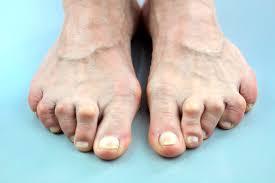Hammertoes
HAMMERTOE
The term “Hammertoe” is used to describe an often-painful deformity of the smaller toes (2-5). It is generally the bending downward of the middle joints in the second, third, fourth, or fifth toes. Usually, this starts out mild and progressively gets worse over time, unless caused by traumatic injury. Unfortunately, a hammertoe will not go away if left untreated and requires medical treatment from a qualified foot/ankle doctor. If left untreated, hammertoes can become rigid and will need surgical intervention to treat. Because of this, it is best to see a doctor as soon as you start to notice or experience symptoms. Arkansas Foot & Ankle Specialists has a staff of qualified podiatric surgeons who are well versed in the diagnosing and treating of hammertoes.
Causes and Symptoms
Hammertoe occurs when there is a muscle and tendon imbalance in the toe and surrounding structures. This imbalance comes from mechanical/structural change over time to create deformity in some people. Shoes with tight toe boxes or high heels that may force the toes into the front of the shoe can also lead to hammertoe. Because of this,hammertoe pain is more commonly found in women, although men are not without the risk. If the hammertoe is already present due to a muscle/tendon imbalance,poorly fitting shoes can irritate or speed the progression.
Signs and symptoms of hammertoe include:
Bending of the toe with an enlarged joint
Pain of the affected toe
Inflammation, burning, or redness
Corns or calluses on top the toe or between two toes (this is caused by the unnatural rubbing due to the bending of the toe)
Open sores (found in severe cases)
In the early stages of hammertoe, it may be easy to straighten the toe out. As hammertoe progresses, it will become increasingly stiff / rigid and more painful to straighten. Eventually, you will not be able to straighten it at all. Surgical intervention is often necessary to correct it, and more easily accomplished in the early stages.
Diagnosis and Treatment
To diagnose hammertoe, the doctor will assess the visual stateof the toe and will ask you about the symptoms you’ve been experiencing. An X-ray at the office will verify thedegree of curvature in your toe and show the bone and joint structure. If diagnosed early, there are a number of non-surgical treatments available to treat hammertoe.
The doctor may suggest/prescribe:
Footwear
You should avoid pointed toes, high heels above two inches, or shoes where the toe area is too tight.
Padding for corns and calluses
The pads will protect the corns and calluses from irritation. These may be over-the-counter or prescribed.
Orthotic devices
An orthotic device that is custom fit to your foot can help regulate the muscle and tendon imbalance associated with hammertoe.
Medication
Oral Nonsteroidal anti-inflammatory drugs (NSAIDs), like ibuprofen, might reduce inflammation and pain.
Injection therapy
Corticosteroidinjections may ease pain and inflammation
If the hammertoe is rigid and painful, or open sores have developed, surgery is necessary. Depending on the condition of the toe, your foot surgeon may relax or move the tendons that caused the toe to bend. Thesurgeon may also need to correct the bone alignment, fuse the bones of the joint together or remove parts of the joint depending on the severity of the condition.
If you are experiencing hammertoe pain in your toes and would like to speak with a doctor, you may request an appointment online or come see us at our Fayetteville office or call us at (479) 935-3378.

